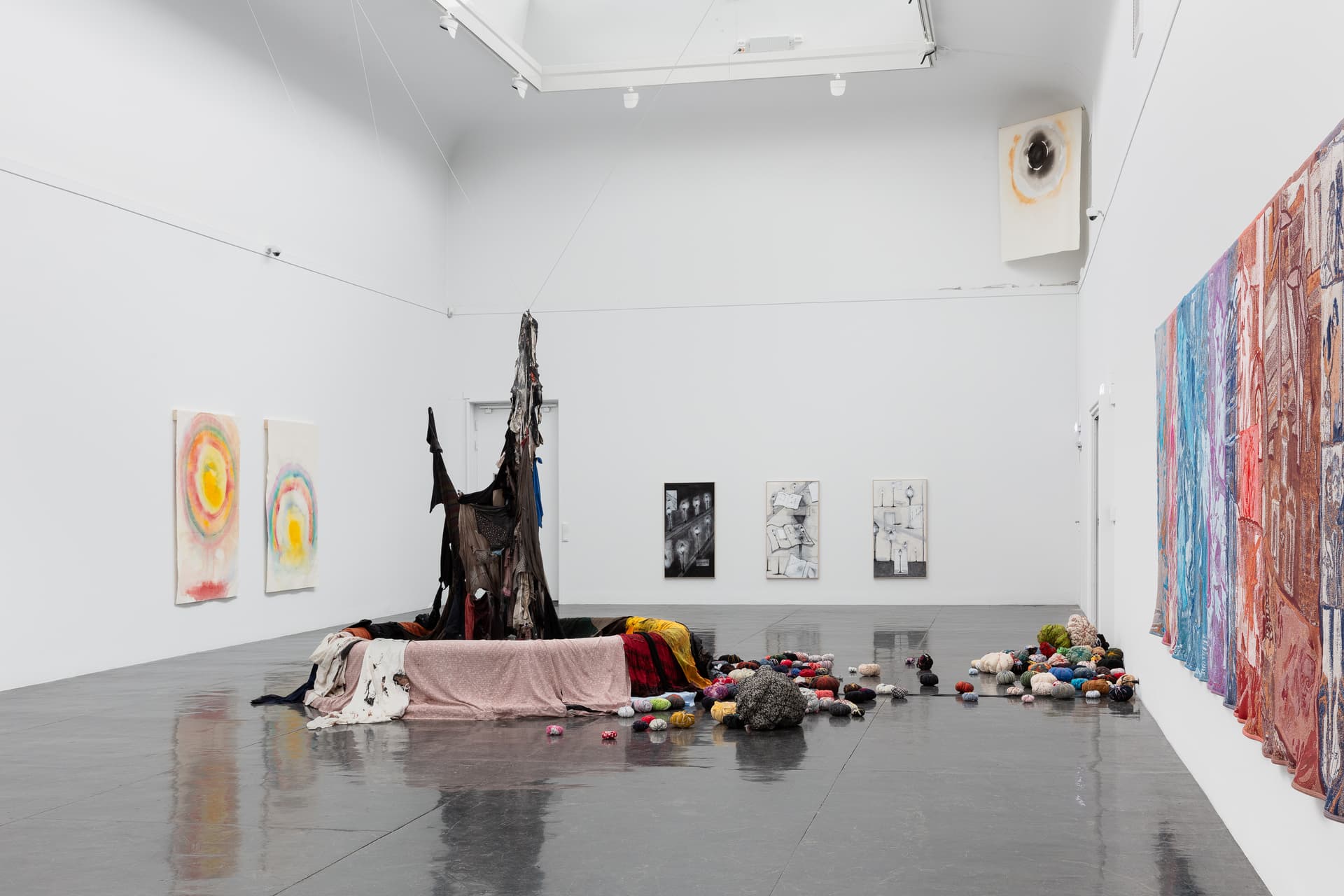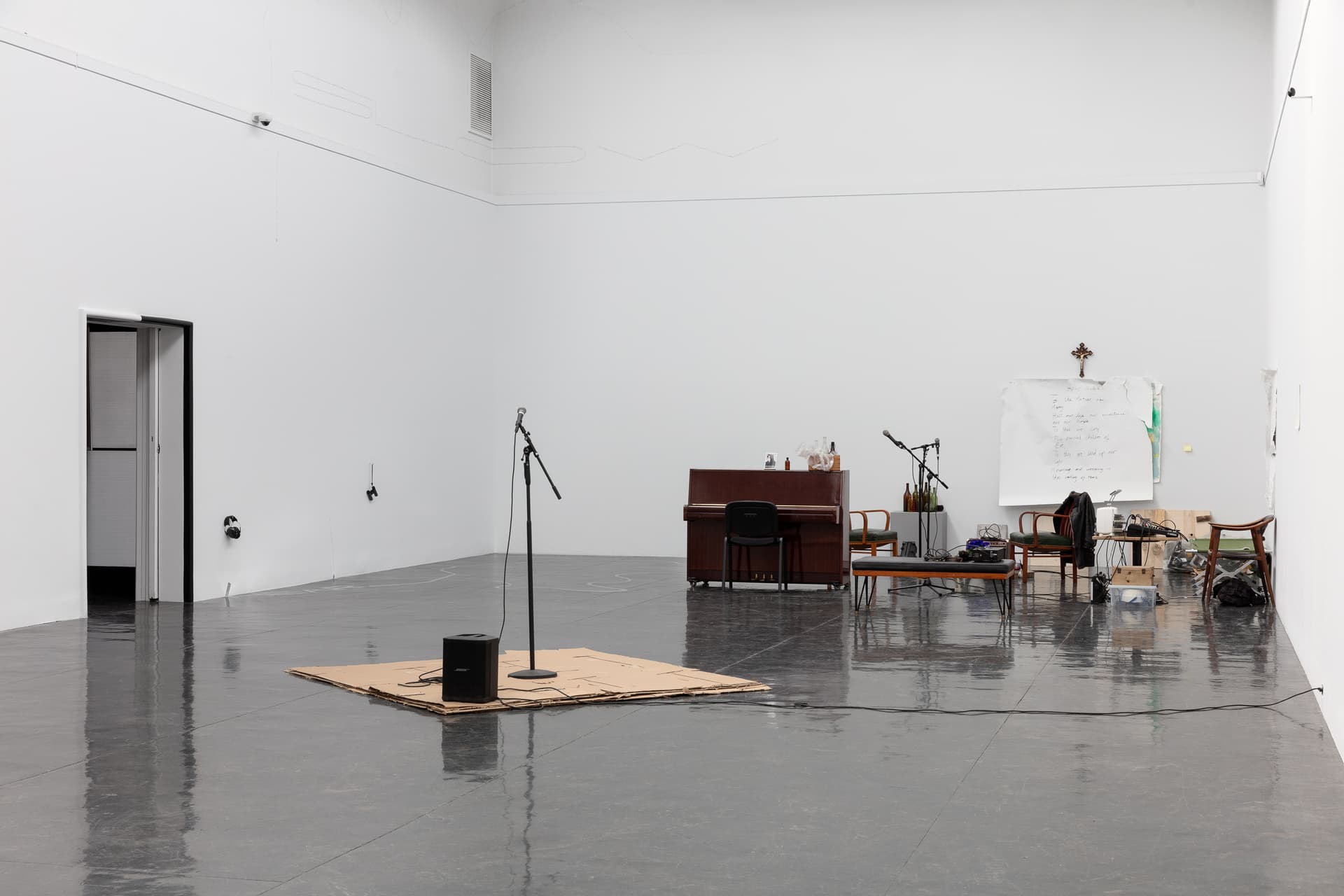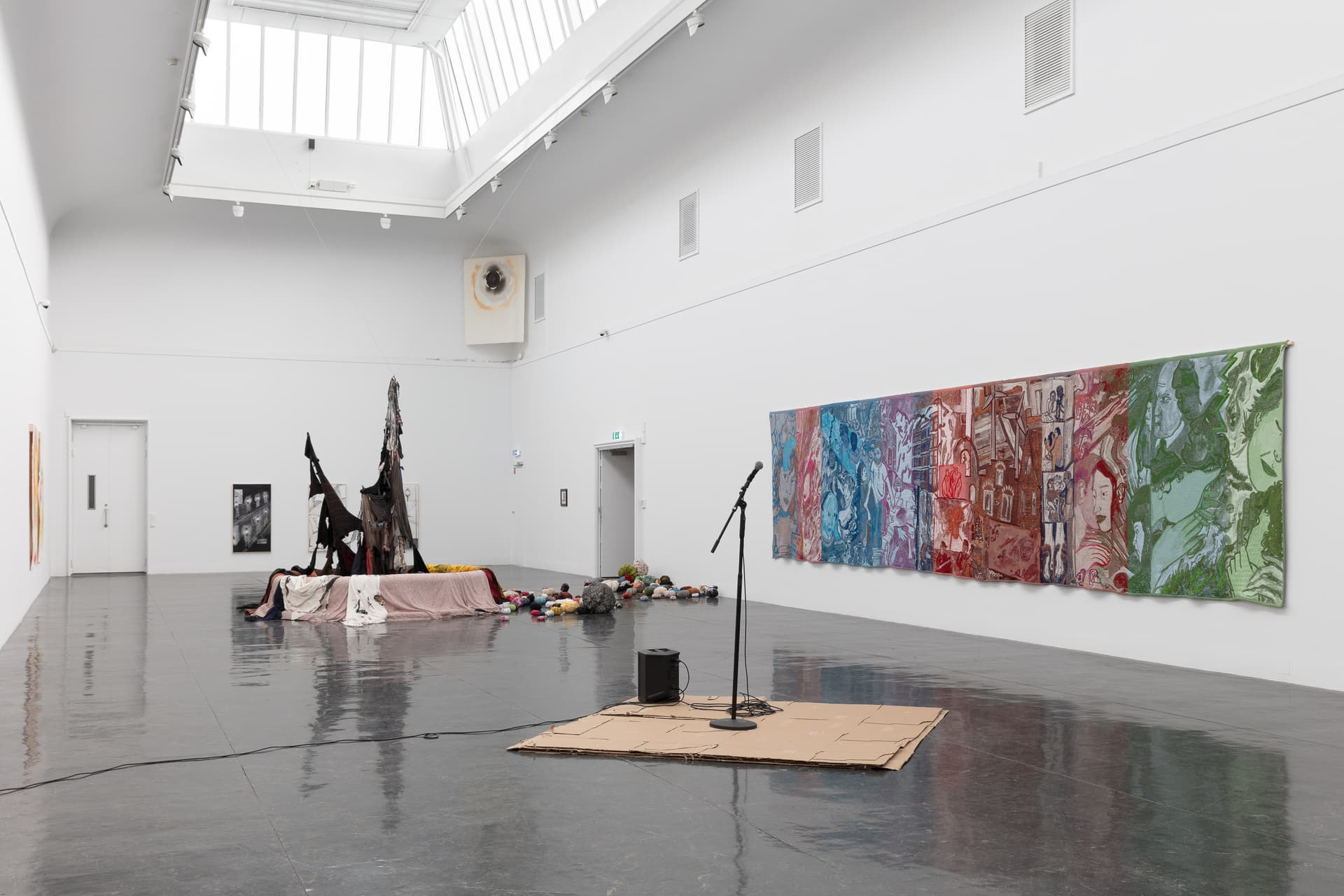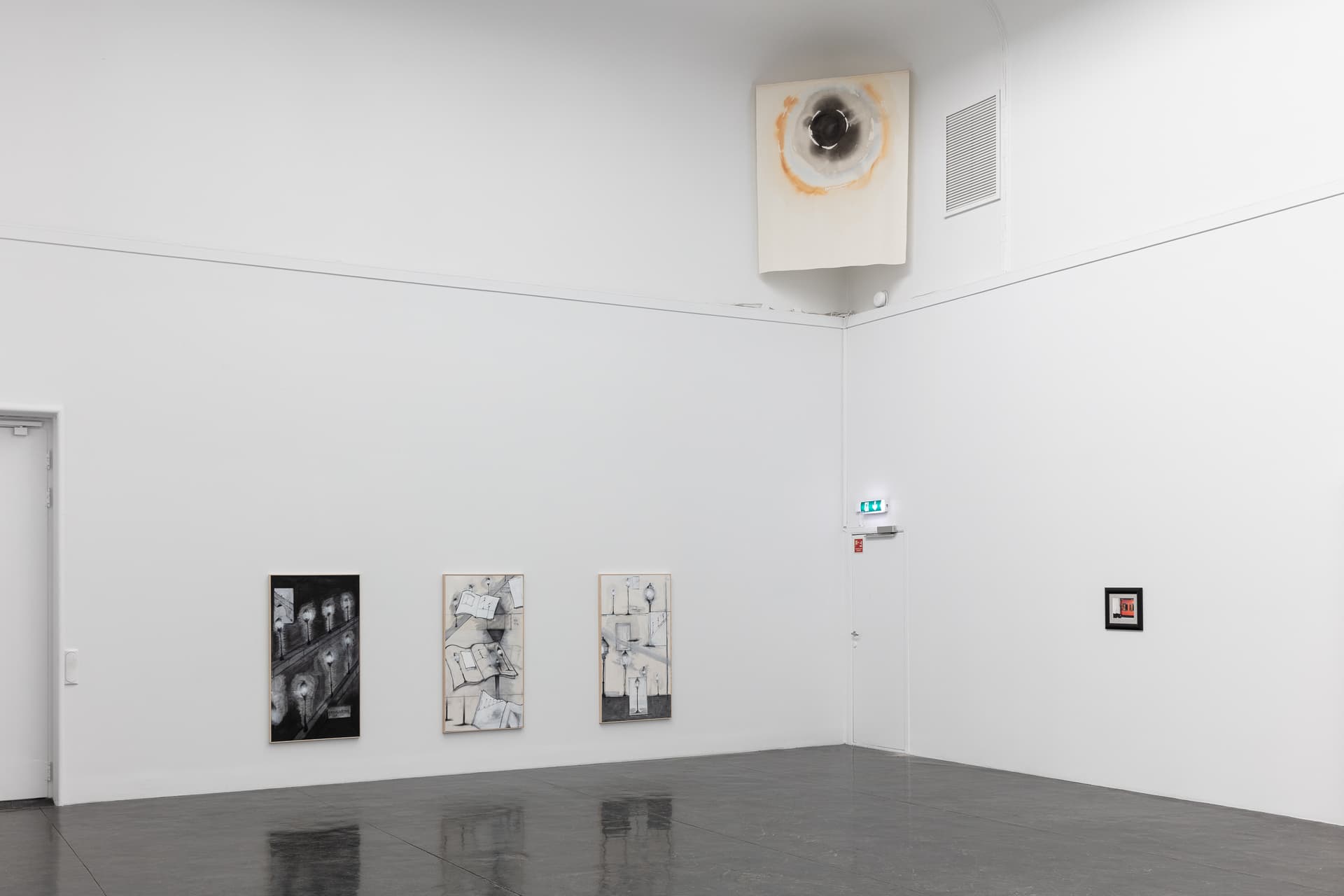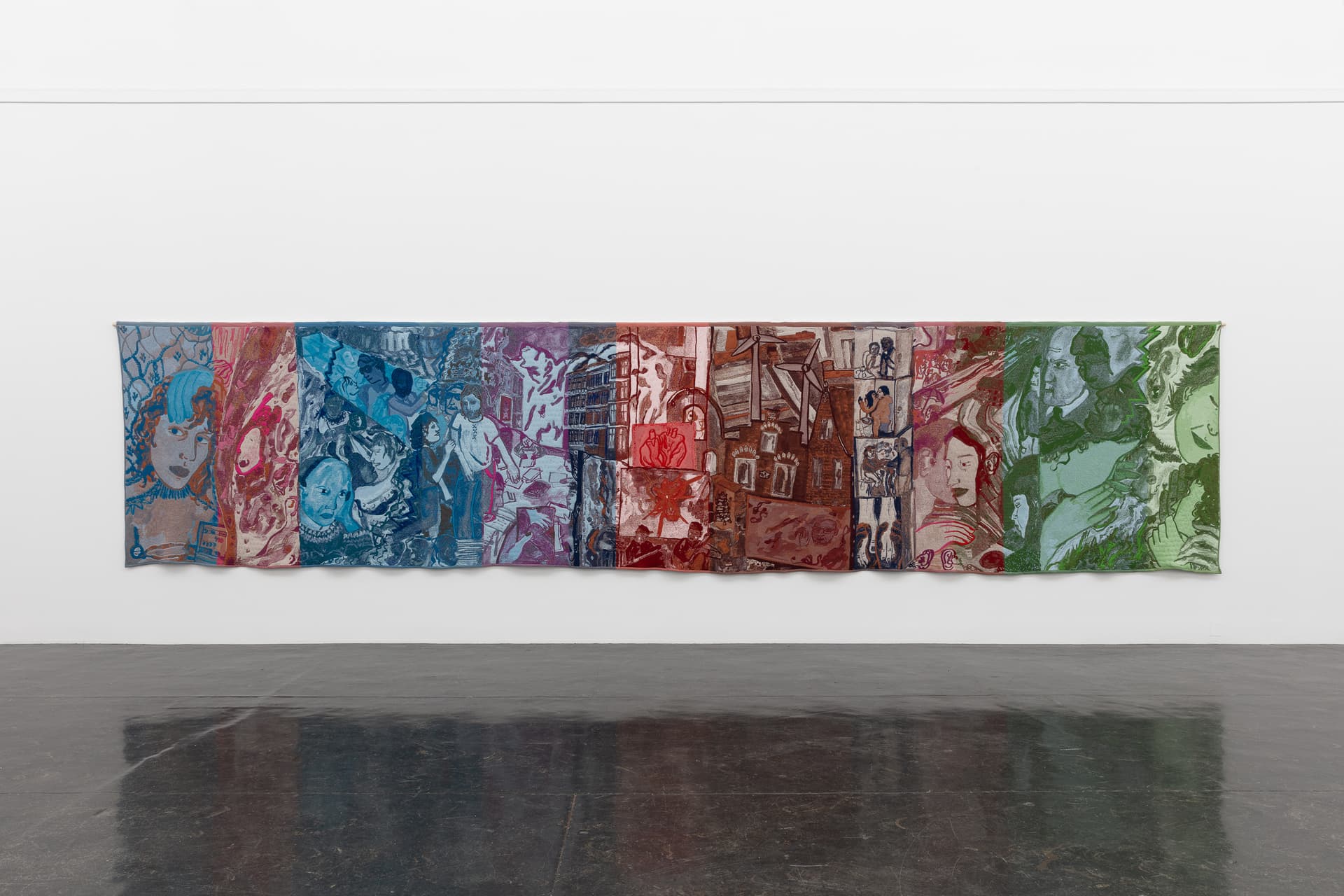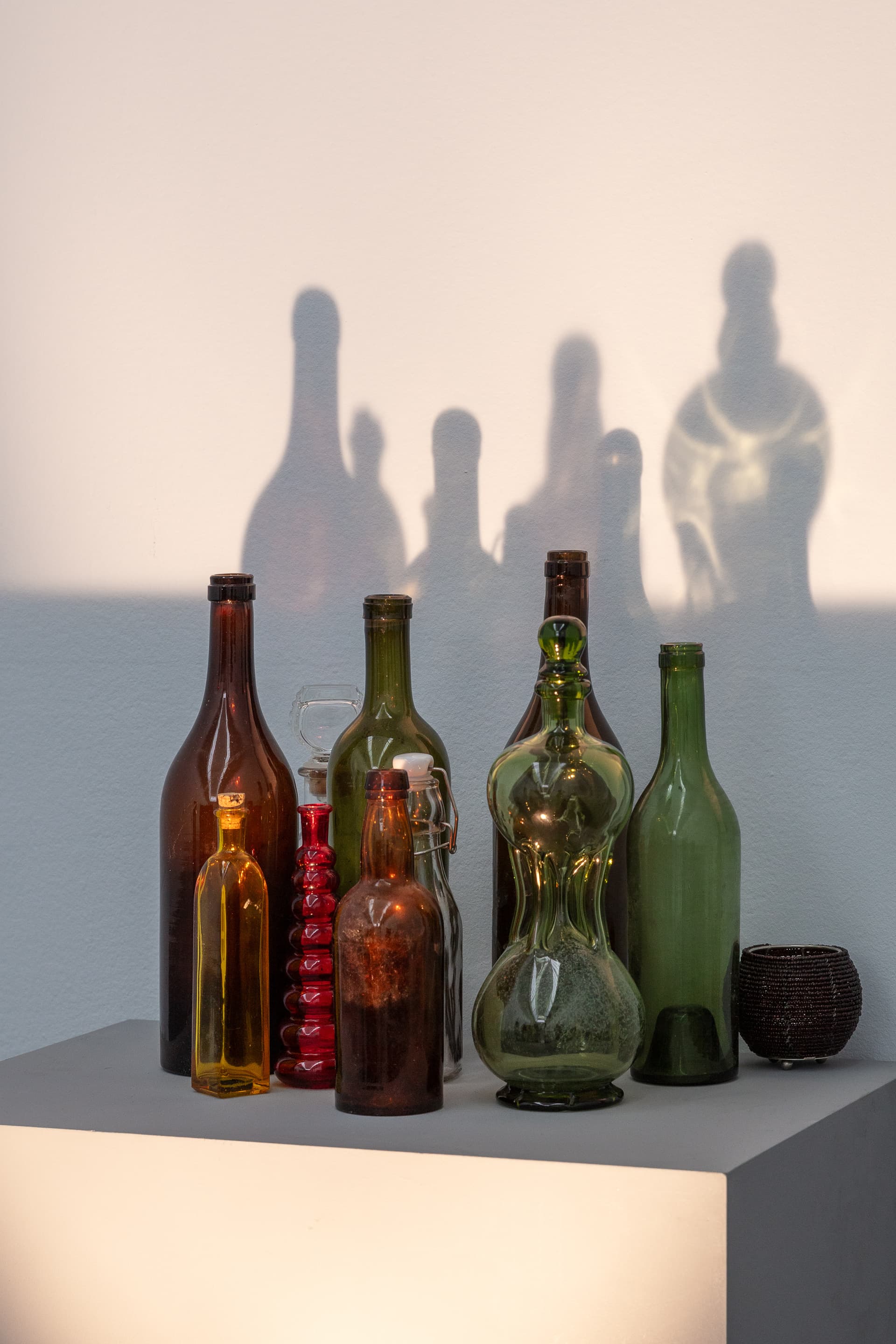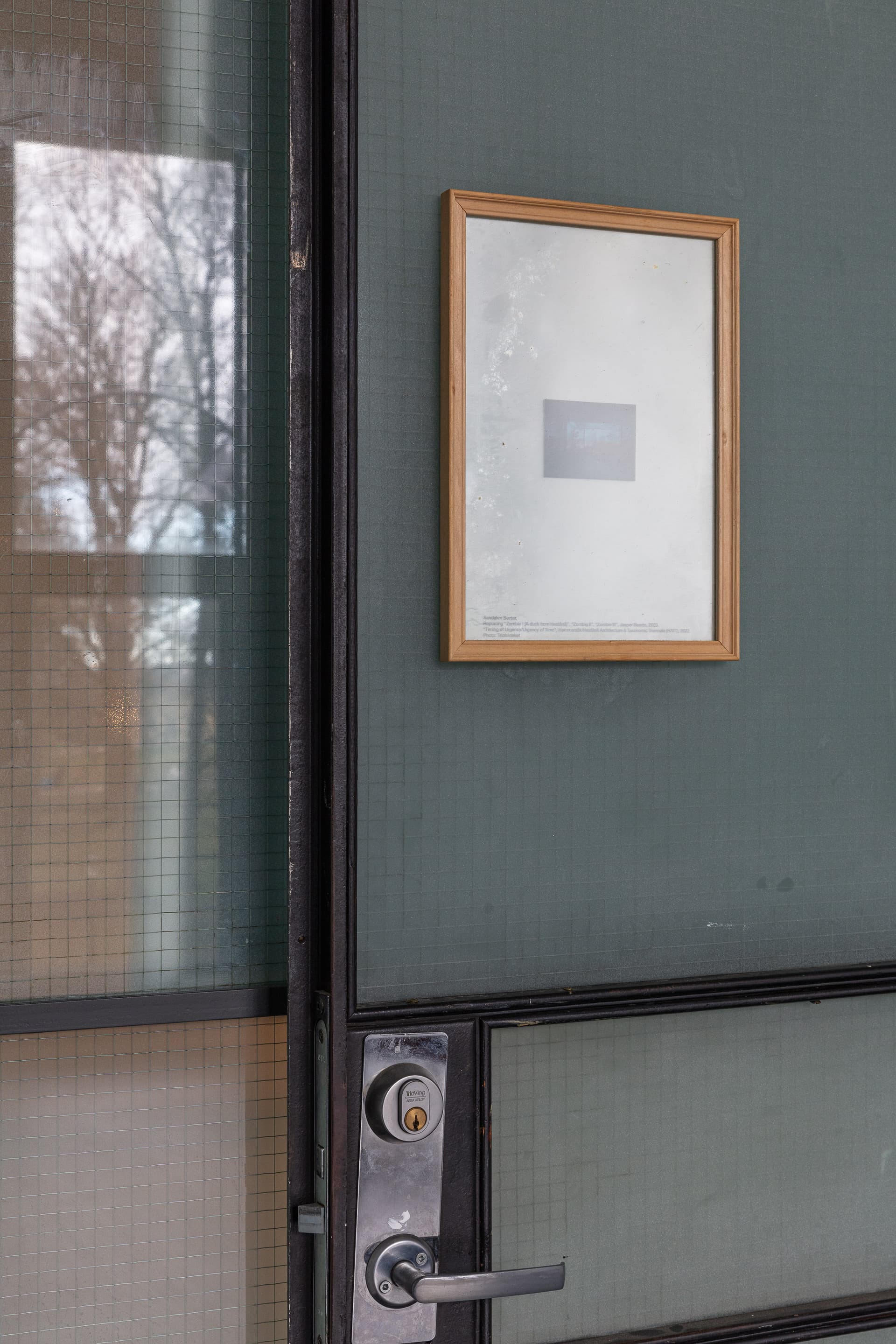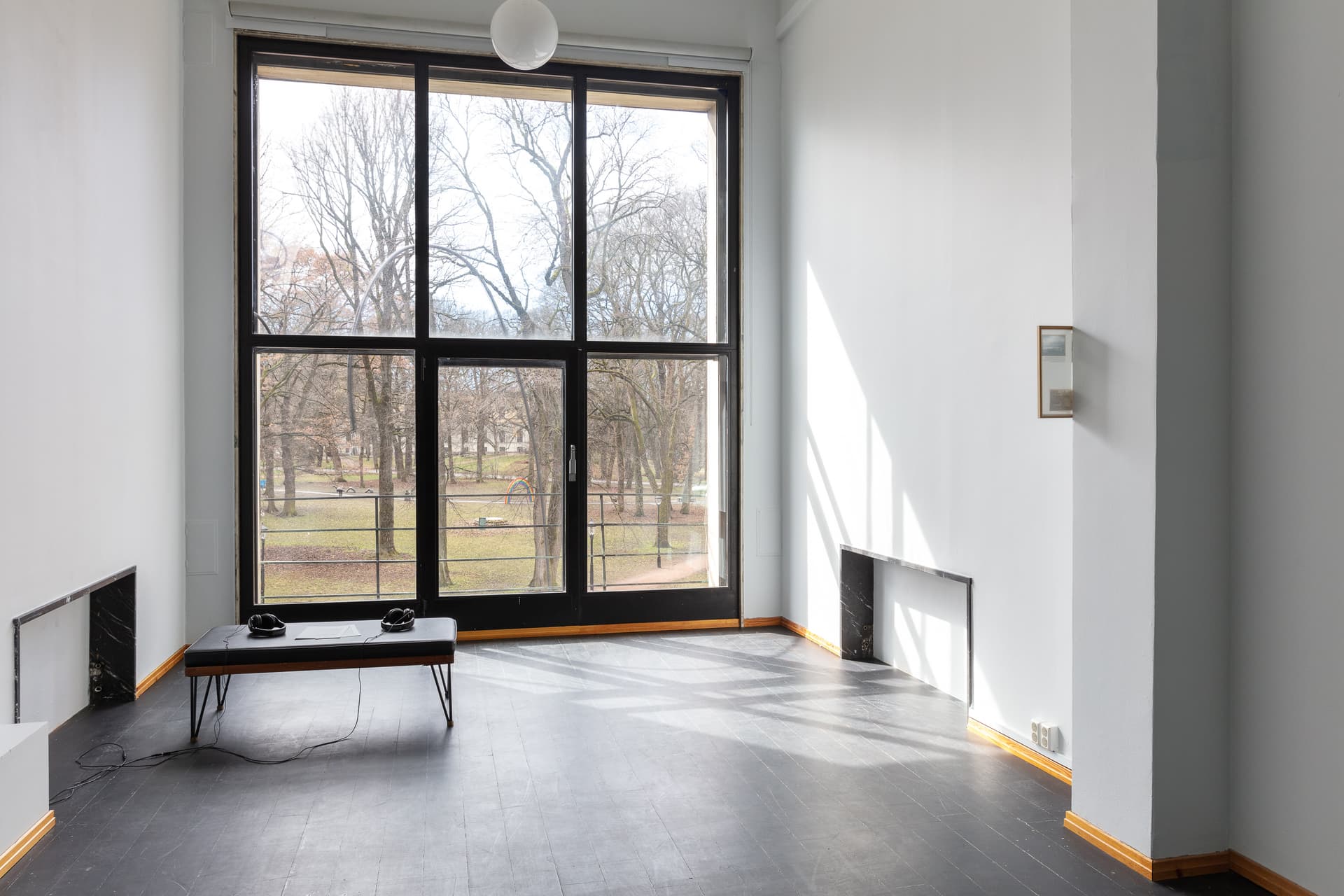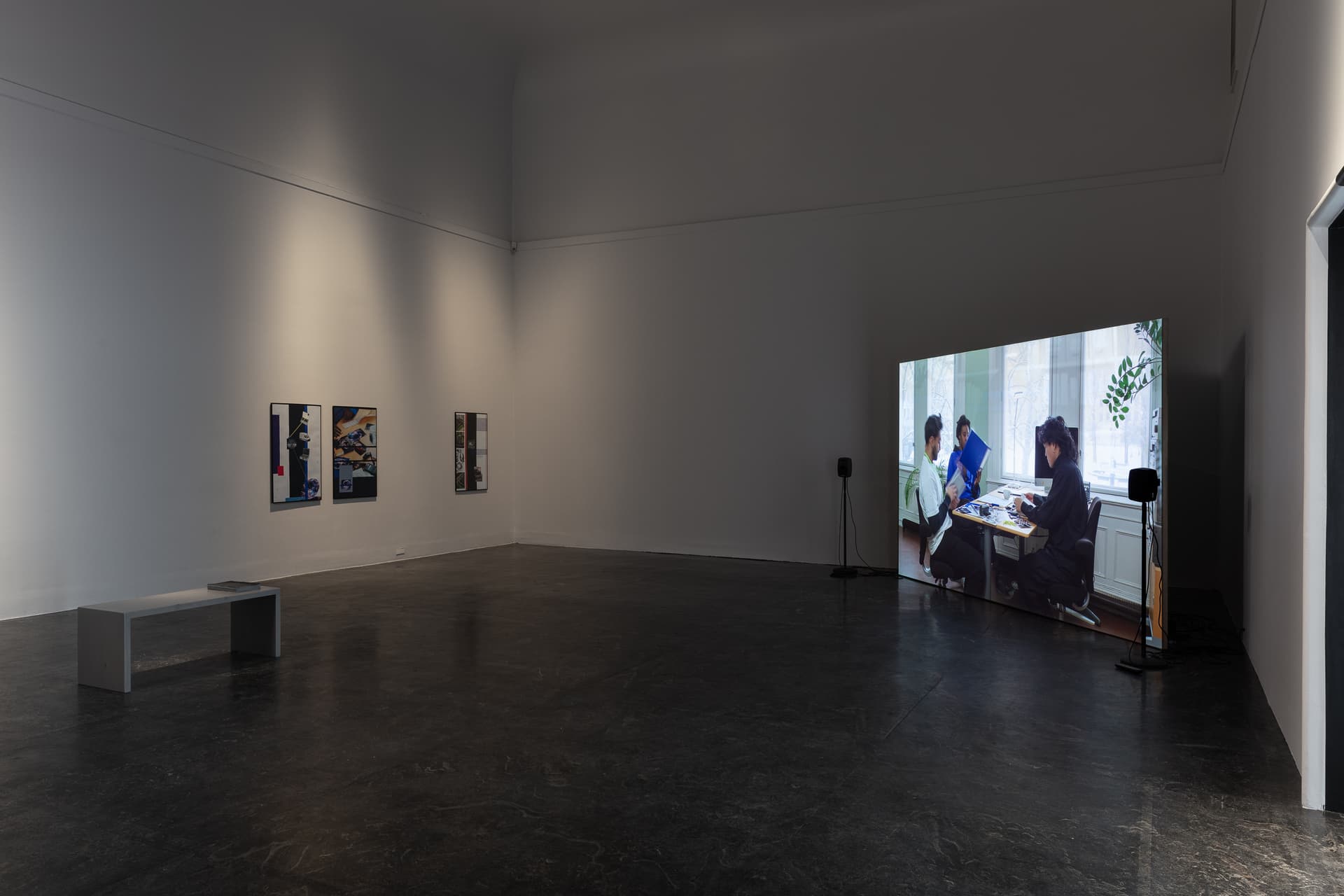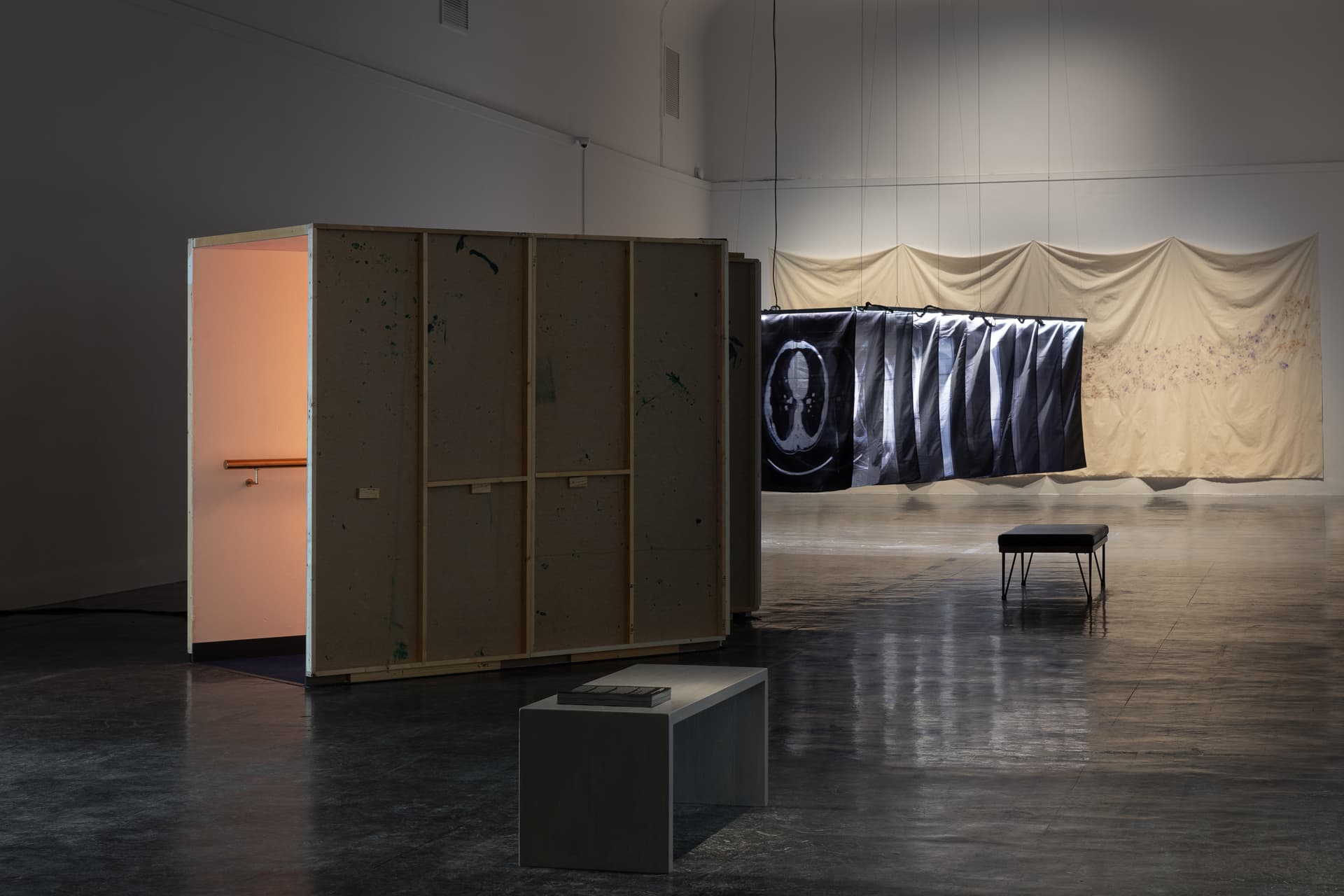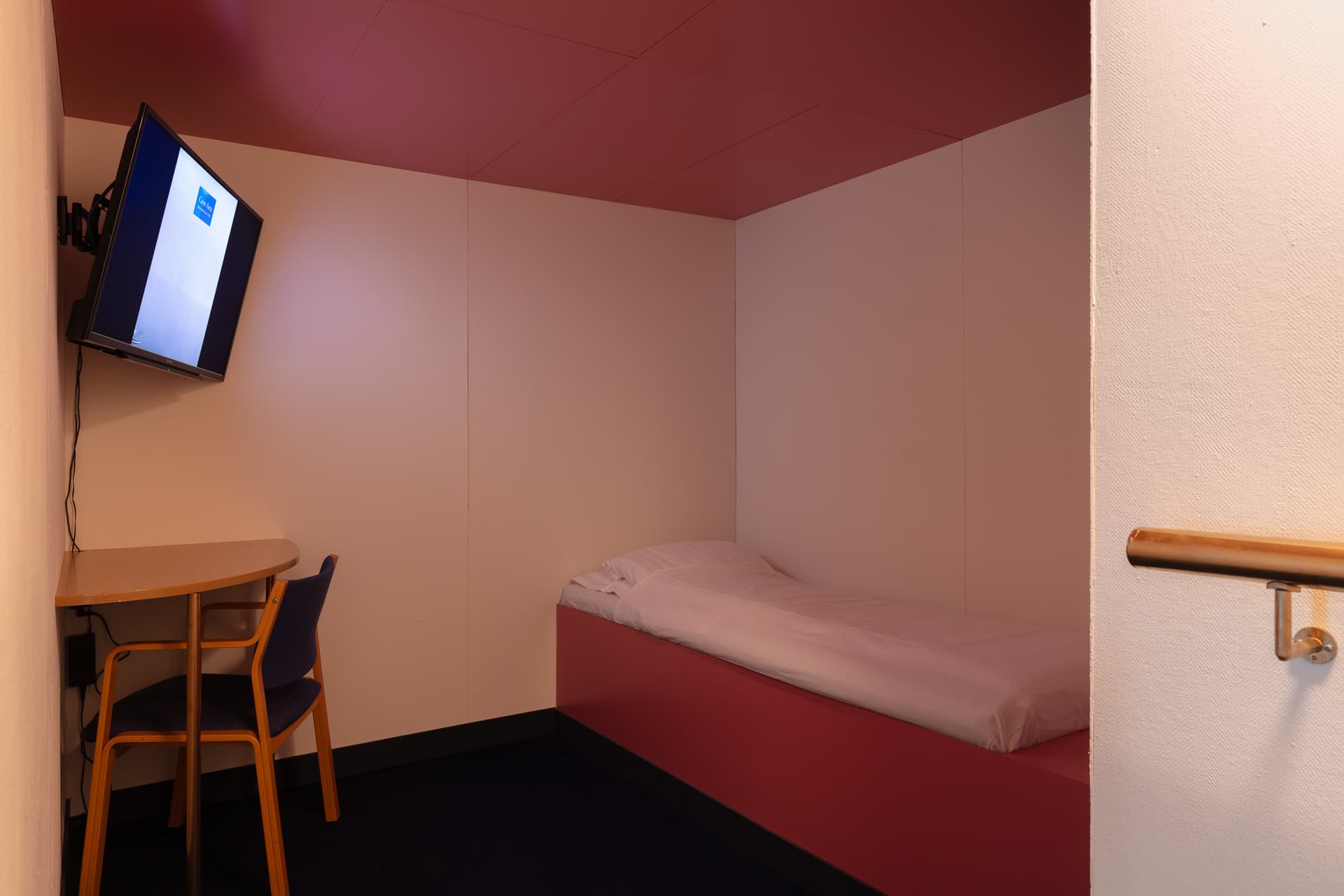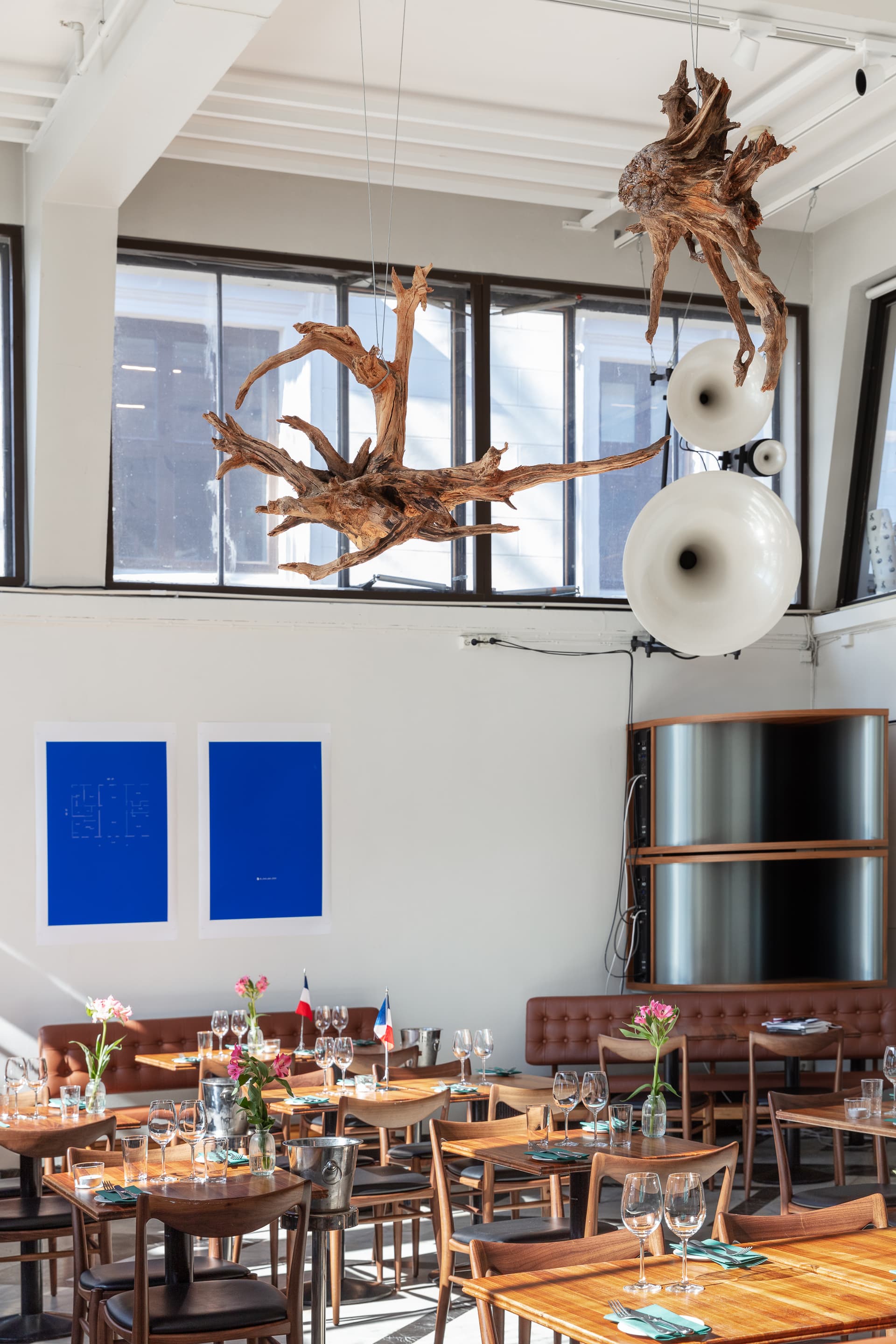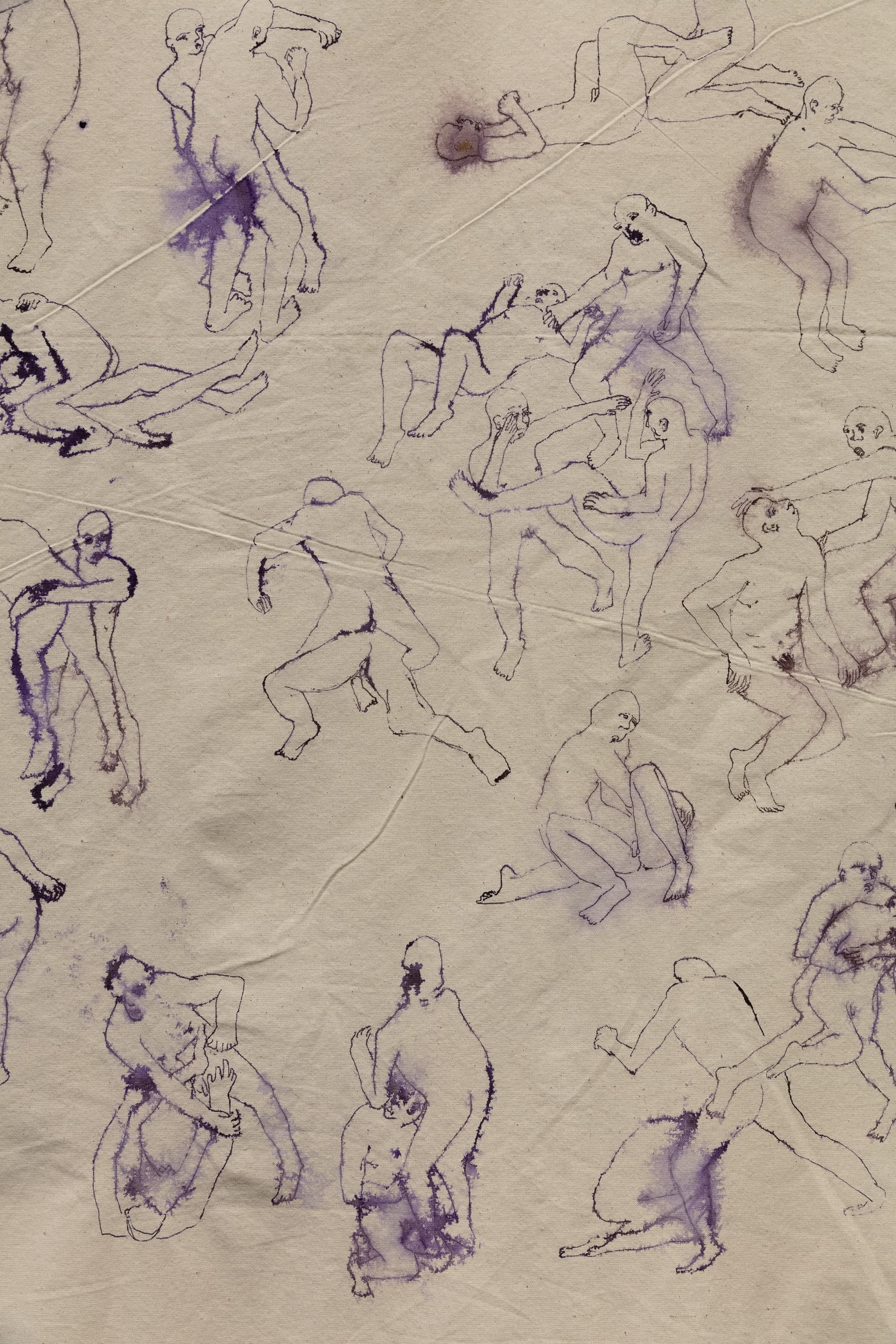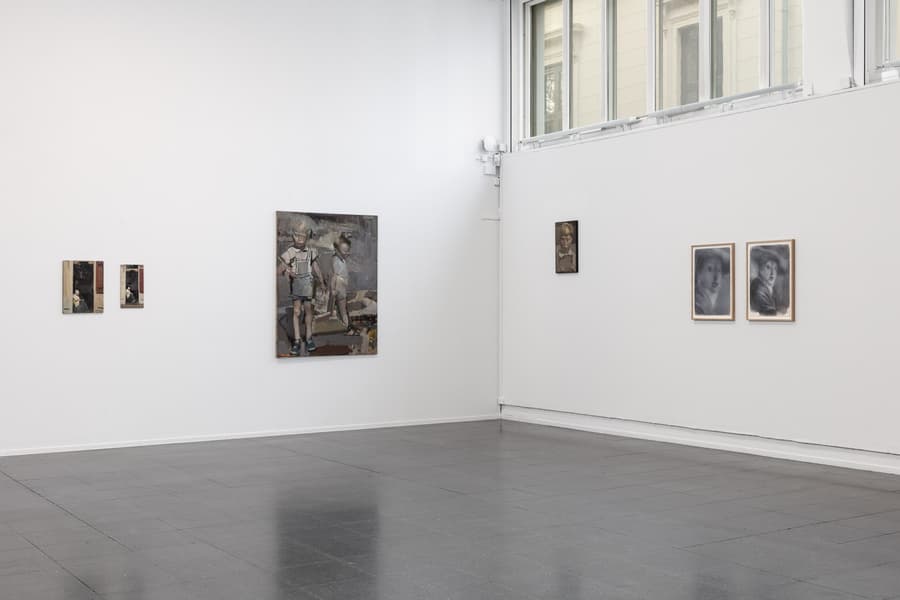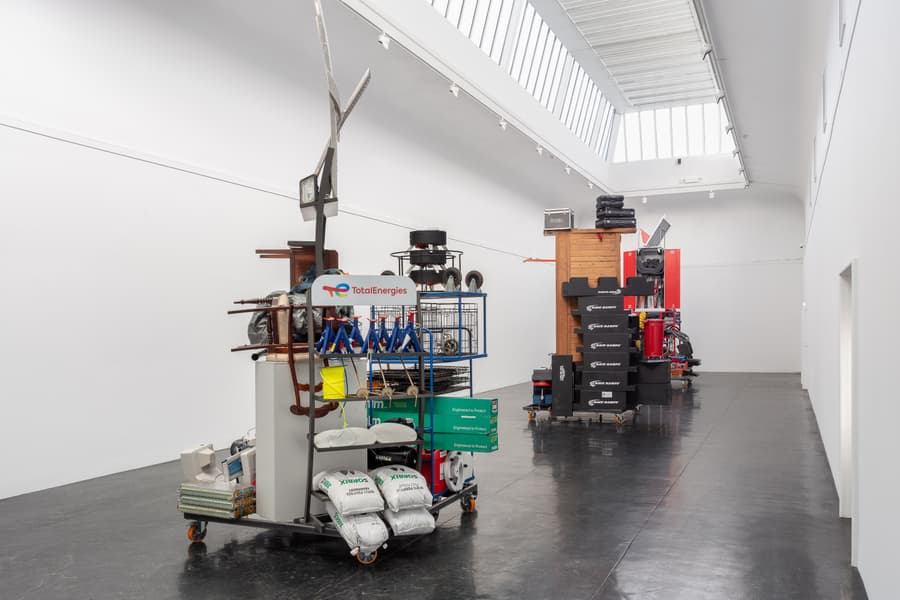Sampson Addae/Seeds, Korle Lagoon
Over time they aged, became stained, and had tears in them. They were perceived as rags, unsuitable for important occasions. Squeezed and tied in plastic bags, they were on their way to the charity bins and longing to start a new life. But, what kind of life would that be? Weathered by the touch of countless bodies, they have become eloquent storytellers in my art practice. They whisper narratives of growth and resilience. Each thread in them bears witness to the lives that have intertwined with them, weaving a tapestry of experiences.
For the past two years, I have been collecting my clothes and used clothes from people in Oslo. These clothes contain traces of DNA from their previous owners. Therefore, I refer to these clothes as anonymous bodies. These “Bodies” invite other bodies (viewers) to reflect on how circumstances influence questions of value and the power we hold to shape our surroundings and, in turn, be shaped by them. They also prompt reflections on the potential dangers of unchecked adaptability, shedding light on overconsumption, and the lasting impact of our choices.
Kim Henning Andreassen / (See titles on wall)
They all depict lamp posts - seemingly from another era, but still to be found in cities today, prompting reflection on the passing of time and the evolution of urban landscapes.
A figure observing the city streets (being observed, absorbing and absorbed) appears to be the maker of these works, inviting contemplation on the role of the artist.
The works motives are rendered in a sketch-like manner, to invite the viewer to be a part of the process – as readjustments are visible.
Time, change and various aspects of nostalgia, both yearning and more native, groping nostalgia are important aspects of my works. The motifs are often found in urban environments and deal with underlying themes around fashion, dandyism, and soft masculinity. My works explore mundane, everyday objects and situations.
Eili Bråstad / Isä ja Mie Työtelhään (Pappa og jeg arbeider/Dad and I Working).
Video loop 6 min. + the roots in the restaurant.
Eili Bråstad grew up on a Kven farm in Reisadalen in Nord-Troms, and in the video she has filmed her father patiently whittling on a pine tree root collected in the forest near the farm. Until around 1980, the innermost, hard parts of these roots were used for burning "tar mile" - a laborious and time-consuming process for extracting/distilling tar.
Tar was a valuable product, used to impregnate houses and boats, as well as in folk medicine, and the tradition was so strong in Kven culture that it went by the term "the black gold of the Kvens".
The video, and the roots in the restaurant (the large one is the same as in the video), tell of the connections between generations and stories, and symbolizes identity and cultural belonging. The indistinct work refers to the abstract experiences of having only heard about the almost forgotten traditions, as well as to the Kven language and culture that almost disappeared due to the harsh assimilation politics done by the Norwegian government.
Iben Erik Bødtker-Næss /Polar box boat
I inherited a box full of photos, letters, and postcards from my grandmother’s granduncle, who disappeared through the ice in Greenland in 1907. The Box was passed on to my great grandmother, then to my grandmother and then to my father, and now finally to me. Every generation has somehow, maybe unintentionally contributed to the box by doing research and attempting to decode the documents. Now it is my turn, and I have searched for lost letters and a lucky coin that was mentioned – to find out that the original owner of the box, my grandmother’s great-granduncle might have been eaten by a polar bear – or by his friend, and that the lost letters and the lucky coin have been removed and manipulated by someone in my own family.
Wenche Sandra Marie Disington/ “Tell me in Confidence”. A Relic from the Singing Bottles.
Where does the artwork start and stop? Things that are out of control and never finish. How to continue after difficult traumas? The human voice is the instrument we always carry inside and with us to express thoughts and feelings. This is a story about how one is influenced by various things throughout life gradually becoming our personality. In my work I use masks to show different sides of Change. Music as therapeutic.
I will activate my space/room/installation every day between 12.00 and 14.00. Meaning that I will listen to Music, play the Piano and sing, Joik, Thorat-singing and Chant and have Conversations with the audience. We can for instance talk about the Exhibition, our relationship to Art, and how we can continue after traumas? This can be in English and Norwegian. If you just want to sit down and read or rest, you are also Welcome. I will ask to take a picture of for my Archive, but only with your permission.
Santiago Díaz Escamilla / An Endless Opaque (I Threw My Head Back and Looked Upside Down)
In Bogotá, Colombia, walks revealed a recurring encounter with a native bird species, prompting the notion of a universal bird. Upon relocating to Oslo in 2022, encounters shifted to Hooded crows. A pivotal moment arose when a photographic attempt to capture these encounters resulted in a blank negative, which led me to face the void of missing images. The work delves into two chance occurrences. It juxtaposes the failed photographic result with my meeting with 17th-century physician and mystical philosopher Robert Fludd's attempt to represent the nothingness before the universe's origin through a black square.
The installation, arranged in two rooms with contrasting lighting, presents two eggs. Placed one in each room, one white and the other black, they echo the birds. However, various ancient cosmogonic myths present the "Cosmic Egg" motif. It is also among the first names the physicist and priest Georges Lemaître initially gave to his Big Bang theory. Furthermore, an architectural element, two painted door frames, acts as transitional portals, visually distorting perceptions of space.
Anne-Marte Før / Trauet, Nattvekkaren
I work with cultural-historical materials in a broad sense, reflecting on transformation, absence, gaps, and time. With an interest in location-bound and fluid identities and how objects, songs, stories, knowledge, and art change through processes of passing on traditions.
Trauet, which hangs in wires from the ceiling, consists of an old baking trough with the year 1789 engraved on it. The trough is cut lengthwise into two parts with an attached electric actuator. Nattvekkaren consists of an old, unusual bell, a written text, and a curved metal rod with a length of 14 metres. A Nattvekkar is a bell that was used to wake the forestry worker if the horse was too cold when standing outside at night. If the horse shivered from the cold, the bell made a thin, sharp sound that signalled that the horse needed to be kept warm.
Steinar B. Hauge /1. (A) (III) 2. (B) (II) 3. (C/X) (I, 1.1.2)
1. Through a triolectic series of undated pine-framed images, skirting-assemblages, performed fragments of forlorn sonic spaces, a window from the backside of information and a repurposed sign frame from the abandoned pub “Tre Brødre” at Sandaker Senter, Oslo,
2. “1. (A) (III), 2. (B) (II), 3. (C/X) (I, 1.1.2)” works with and against time- and a specific historical conflict at the intersection between expanding residential development and a cluster of semi-vernacular cabins (“1930”-) at Hesthammaren, NO,
3. as found referred to by the curatorial framework “Hommersåk/Hestånå Architecture & Taxonomic Triennale (HATT)”’s exhibition project (A)Re-negotiating the Cyclical Event Through the ABC/X of a Triolectic Approach to Time as Material- and Method in Post-Social Democratic Place Making Processes (B) We Never Could Do Anything About! What We Could Do Something About, (C/X) Place Has Fallen Atime in the After-Afterglow’s archival material.
Abirami Logendran / Diamond Heist- video installation, with a film, sound and 3 movie posters.
Diamond Heist is based on a fictional story about three friends who plan to steal the Koh-i-Noor diamond from the British royal family. They sit in an office and hatch a plan - completely inspired by main stream heist movies.
The film is a satirical/humorous approach to an exploration of identity - and visual culture in particular. What role do pop culture references play in post-colonial identities, where complex ideas meet complex combinations of cultures. Diamond Heist is an attempt to explore this hybridity. The posters show the planning process and play on the fact that rigid plans can be built on irrational and illogical ideas, in line with the structure of Hollywood heist films.
2 blueprints belonging to the work hang in the foyer as an extension of the work upstairs.
Ghazaal Nasiri / The boxer
In this work I explore conscious and subconscious aspects of automatic painting.
My work is directly inspired by the art I grew up with in Iran, the embroideries, carpets and handicrafts made by woman for decoration. My process of making art is very close to the way they make art. I start out with the first steps on the floor like my grandmother, a Qashqai nomadic woman weaving kilim with colorful threads. She would sit in front of the loom and start weaving without a pattern on paper, she always knew what color to use for the next knot and what the next pattern was. The pleasure of unconditional experimentation was dependent on this engagement. At this point, the artwork is the scene of an event, figures detach from their context and regenerate themselves into an independent form of art. Automatism relies on the artist´s subconscious. A mixture of intention and what happens unexpectedly. The first move is unrestricted and instinctual. But the second stage is calculated. At this stage the task is to find a balance between freedom and discipline. Following a dramatic visualization as well as a united foundation.
Adin Mušić / Headache & Heartbeat
Headache and Heartbeat is a sculpture consisting of X-ray scans of my own body interpreted by a malfunctioning screen and documented with a digital camera. The malfunctioning screen alters the shape, thus obtaining an "unlimited lifespan" in textile form. The title originates from a sensation that arises when the body is connected to machines.
My works are a conceptual exploration of the future with a critical view of the modern technology surrounding us. I focus on themes like digitalisation and light as a source of information while also asking deeper questions about the role of the soul in modern reality. I repurpose defective monitors and screens as a fundamental part of my practice, serving as a symbolic anchor for my artistic expressions.
Lately I've explored a more personal approach to my practice, as I've previously been diagnosed with cancer twice. I've created ambiguity that explores the relationship between my personal experiences and the modern technology surrounding our society.
I seek to challenge the viewer to contemplate the constantly shifting reality of the digital age and how we, as individuals, navigate through it.
Edvard Skodvin / Echoes of Square One
"Echoes of Square One" is a performance where I delve into my own mind through a dialogue between two versions of myself. Holding a microphone, I read a poem while the other me, wearing noise-canceling headphones, attempts to do the same. This setup reflects the challenge of hearing my own thoughts amidst life's noise and the struggle to understand myself. It's about what gets lost in translation when trying to communicate with oneself, exploring the gaps between what I want to express and what I actually hear.
Ane Barstad Solvang / Søstrene (Sisters)
Søstrene is a diptych depicting suns with haloes, an optical phenomenon produced by light (from the sun or the moon) interacting with ice crystals suspended in the atmosphere. The paintings are part of an ongoing series exploring the sun, light and colors in relation to optics and the eye, through repetition of the same template. The paintings are always painted two and two together, to create a movement between the two images, an animated poetic form, showing the passing of time, implying a potentiality for change. I have a background in book making and comics, I always think in spreads and sequences. This is the reason why my paintings often come as siblings.
On a deeper level, the sun works as a metaphor for knowledge, as a common truth. The female gaze is central for the style of the paintings. The idea has been to find a template that can aestheticize feminism through liquid materials, bodily sizes in painting and automatic, performative movement.
Svart sol (Black sun)
Svart sol looms in the distance, high above, on the other side of the room. As a reminder of the ephemerality of our existence and of our time.
Lea Stuedahl /Again I looked out the window, simply looking elsewhere.Now its best in memory
The Double Room
Three “photomontages”; constructed / staged photographs depicting seeing through something; looking at or being looked at.
The photographs are made of found and made imagery, layered and then photographed through another object (key hole / window frame) and in the end printed. The photographs are strange but familiar. Behind is an interest in questioning expected answers and explanation to what on is looking at. Each of the photographs are framed specifically for their own “personality”, making them into an object of their own.
Paulina Stroynowska / Slow. Integrating time.
The work is about the realization of our own tempo and when we allow ourselves to be slow. It questions how we perceive time and how time affects us. When are we able to retranslate the motions of words? How much are we able to hear our thoughts and what they hold?
The work is based on a manifesto which I have been working on for several years. The title is Integration, which consists of five differentiated processes: Analysing, Reflecting, Realising, Internalising/unlearning and Integrating. The meaning of the word “integration” in the manifesto is that by moving through time and space, the meaning of our thoughts, ways of seeing and feeling are continuously changing, and we can recognize these changes through those processes.
Madelon Verbeek / "Å bli varm i trøya" (To become warm in the sweater) is a Norwegian saying about becoming familiar with specific circumstances, like a new place.
I traveled to my hometown, Tilburg, in the Netherlands, to knit this tapestry. I was wearing my Norwegian sweater. I bought it at Fretex: this is where you go when there is no one up north to inherit it from. But wearing it in the Netherlands, the sweater was too warm, and I felt quite out of place wearing it, too. I took it off and started to knit. Now I made a knit myself.
It speaks of being warm and cold, it speaks of having two homes, of political, flat and hilly landscapes, of coming and going, returning, staying, missing. It speaks of Alf Rolfsen, Kai Fjell, and Hannah Ryggen, of the concept of home being fluid and ever-changing, of temporality and the sense of belonging to one place or another. It speaks of a desire to turn my back to a place, to face into another, and eventually becoming warm in the sweater.
